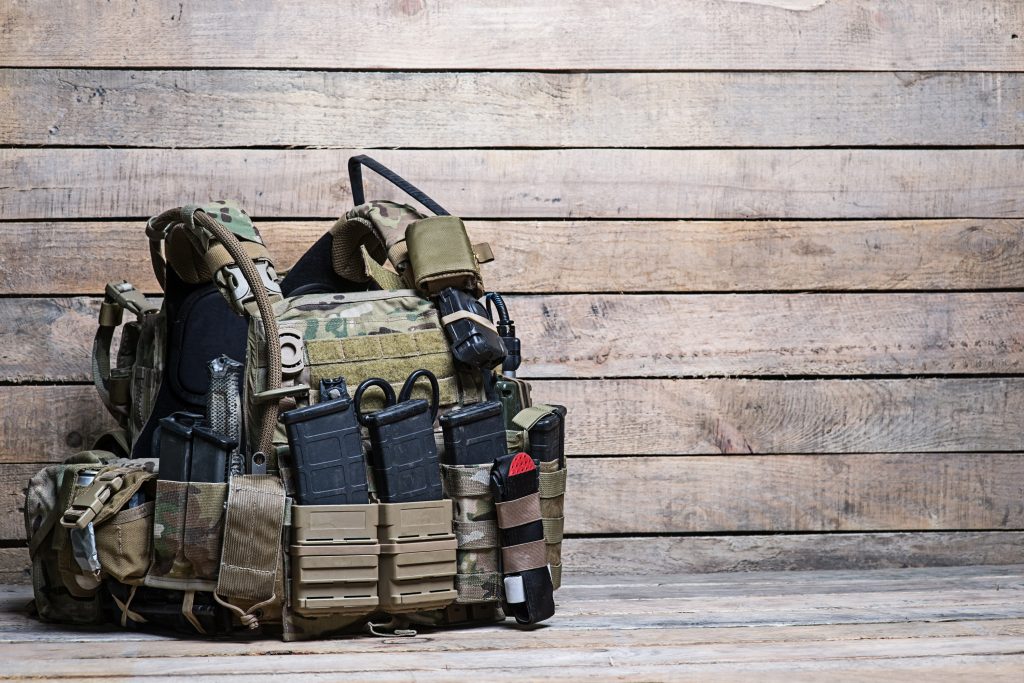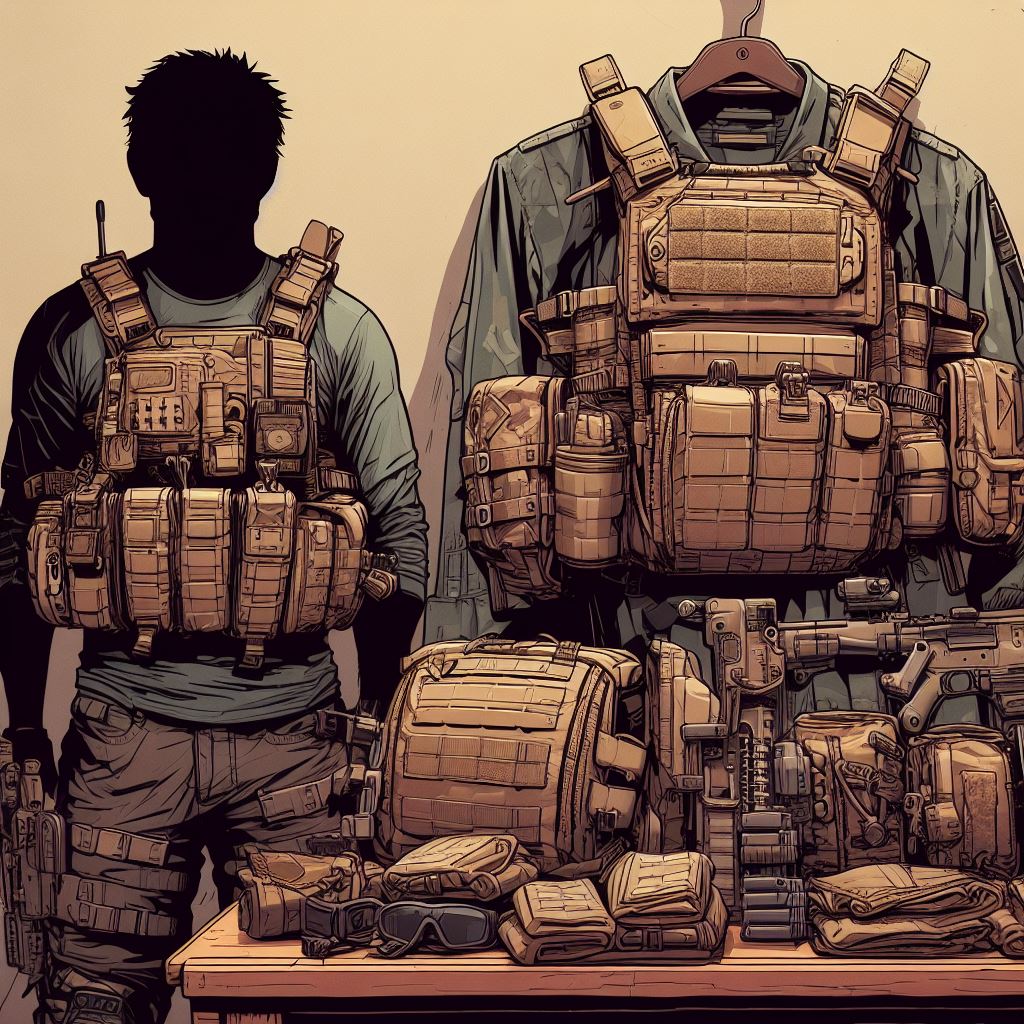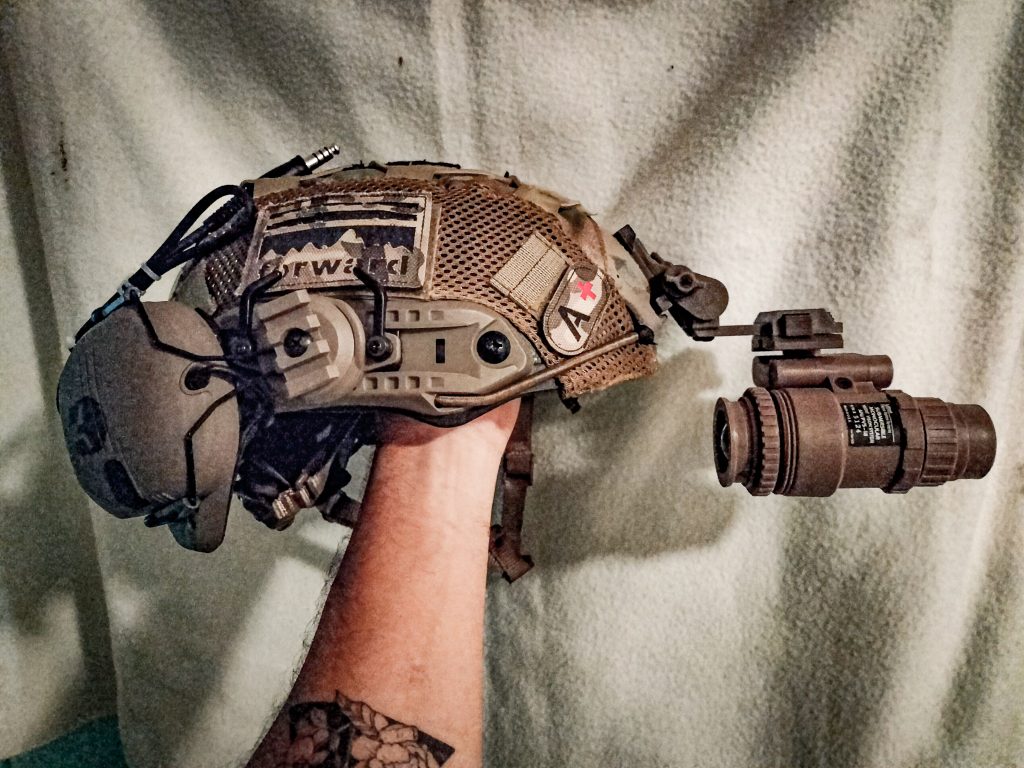Welcome, Today’s topic is about Gear part two. We will be discussing about how I have my gear organized and the reasons behind the decisions. All decisions are based on what type of mission that I will be encountering and similar missions previously accomplished. I conduct practice in the different types of environments that are known will help aid in how the gear will be setup. Something that will hold true to any situation that you may face is to practice and practice some more until you be muscle memory of how your loadout works. Failure has a higher percentage when going on a mission with unused gear loadout. I have been on very few missions that I did not get the chance to use a particular piece of gear because it was given to me during the mission. Only you the person who is wearing the gear will truly know what works best for the situation. Communicate with others will allow yourself to gather more information on a similar situation with a different way to achieve the mission.
My base loadout is light and built to the mission that I need to achieve. This eliminates extra weight that can be burdensome on a longer mission. I believe that there is no reason to add to the difficulties that will be faced during the mission.
HEAD
The reason why I wear a F.A.S.T. helmet and the reason I normally choose this style of helmet is because of the light weight, breathability, and durability. I like to keep the weight from my head as much as possible. Wearing night vision devices that usually have an external battery pack which is normally placed at the back of the helmet to act as a counterweight. This is a lot of weight just being carried by your head and tension on your neck. Wearing the helmet that you have chosen or just have due to limited budget will help strengthen your neck muscles to endure this necessary weight. When the mission needs to be performed during the day, I will bring along with me in a pouch or small pack that houses the NODs. This helps keep the device clean and better protected. Breathability is especially important to me as this allows heat to escape and fresh air in to cool my head to help regulate my body temperature. Durability is important in keeping your head safe from falls, things you bump into with your head, and the many different things that fall or projectile that could injure your head.


The reason I have used Oakley Sunglasses is because of the style that fits my face because there are many out there that might work better for you. I use rated lens that are made to with stand projectiles however small that could damage my eyesight. I have several different sets of lenses that I can switch out during a tactical stop to adjust for the time of day or night that will be happening when I will not have the available time to do a switch. I also have chosen a style of frames and lens that sit on my face that covers most of my eye socket. This is to help stop the momentum of the projectile pushing the lens into the soft tissue of my eyes. Headlamp is a great tool that can be used to illuminate an area while keeping your hands free to be used for other tasks. The headlamp is normally attached to the side of the helmet in various ways. The headlamp can be used as an IR strobe on the side as well as providing red light rays which are the least traveled light rays in the light spectrum.
TORSO
The plate carrier material should be made of cloth and not plastic or polyesters. This allows better chances to not melt, break, or tear while in harsh conditions. The color of the material for the plate carrier is determined on the environment that the mission will be carried out. I do not use the color of black for anything if I have a choice in it. The color black is not normally found in nature or an urban setting. Plus, black colored materials absorb heat which will raise your body temperature. Another reason why I do not prefer black to other colors is because it is extremely hard to change or adapt to help blend into the surroundings. I look at the environment and how camouflage can aid me in giving better success to the mission. Natural colors that can be adapted to the immediate surroundings are best. If it is necessary to change your camouflage go from lighter to darker visa versa darker to lighter color schemes. The plates that I use are a size larger than what is necessary to cover my vital organs. There is a sizing chart for your torso length and width for the plates. Do not drop the plate carrier on to hard surfaces because any fracture can affect the integrity of the ballistic plates. There are different levels of ballistic plates, the plates are mission dependent. Not everyone will wear the same size. I also use side plates to give my cross section an add layer of protection. I tend not to place anything on the side plate areas because it tends to hinder my physical movements. The gear that is organized on the plate carrier is both suited for right and left accessibility. Magazines are kept in the pouches with retaining straps that help prevent noise on movements, magazines to stay in place while bounding, and minimizes the time to retrieve a magazine to reload. Magazines need to have preventive maintenance to help keep the spring strong and clean for rounds to move with little resistance. I do preventive maintenance on all pouches and gear to help address issues that might arise during a mission or at least in practice. I try not to use double magazine pouches because when a magazine is removed it has that extra space for the magazine to move around and possibly cause noise or come completely out. I try to do as much physical movement in my gear to wear it in and to test to see how much noise it creates. It is one thing with noise in the daytime and a completely different beast to deal with when doing night operations. I learned through my years of experience that I have tie downs with 550 cord on everything to attach it to the plate carrier MOLLE webbing. The tie downs do not need to be excessive but secure. I use 100 mph tape that is of a color that matches my camouflage pattern to put over metal that rubs on other metal to eliminate sounds from being created. The back side of the plate carrier I usually have attached is a Camelbak that has a large bladder in size. Any hydration bladder should meet any requirements that you have. Hydration is a must in any environment regardless of the temperature. The bladder hose is usually ran through the MOLLE webbing or attached by tie downs. This helps to prevent the hose from getting caught on things to break the end off or even worse trying to drink from a dirty hose when I need to have thirst quenched. The medical pack needs to be tie down as well. It is particularly important to not use the personal medical pack on anyone else besides for yourself. When working in teams the medical pouch should be easily identified and accessible to render aid. Shirts that I use can very for whatever mission needed. I tend to stay away from fabrics that can easily melt from hot brass or blasts. There are several different companies out there that work. I do not like using Combat shirts that have the pads in the elbows because for me it does not allow my elbow area to dry out. If I plan on staying out on a mission lasting 24 hours or longer, I have an extra shirt that is kept dry in the small tactical pack.
HANDS
The main reason why I choose Mechanix is because I have used them and proven in combat situations. I have been through so many different types of gloves that usually fail at the fingertips because of the stitching. I have learnt that I value my hands which I do not prefer getting cut, touching hot metal from being left out in the sun or from an explosion. The gloves should be able to breath to dry out and keep your skin dry. The gloves should provide a level of protection to your knuckles to help save your joints for longevity. I also practice with my gloves on all the time. This allows me to be accustomed how to work with the gloves.
LEGS
I use 5.11 tactical pants that are fitted for me. I do not wear pants that are not super baggy or super tight that does not allow circulation to my feet. I practice with the pants to become accustomed to how the pants will hold up when wet, dirty, and of course movement. I do use all different types and styles of pants that help accomplish the mission. There are times that I have used built-in knee pads. I do not normally prefer built-in knee pads because when the pants get wet, and I have had many things in my cargo pockets. My preference is that I like pants that are wonderfully comfortable and durable in every sense. Practice, exercise, and use different types of pants that will be suitable for your mission. The type of material should be kept in mind about melting and preventing future injuries as much as possible. There are many companies out there that do provide militarized style cargo pants that will work.
FEET
General foot health is just as important if not one of the most important focuses that I place importance on. Socks are important to maintain temperature, regulate moisture, and prevent hotspots that eventually turn into blisters. If I plan on traveling long distances on foot, I keep an extra pair of socks that I keep dry in a small tactical pack. Properly fitted and worn in boots are best for any activity. Going on a long foot patrol or exercise, I tend to use worn in boots that are properly fitted to prevent hotspots/ blisters to form. There are many different types and styles of boots that will help you comfortably achieve the mission. I do not advise using the ease of access zippers on the sides of boots because zippers will fail before laces. If the zipper breaks the boot is render useless. I prefer boots that just have laces on the front of the foot. If a lace does break, I always carry extra 550 cord for a quick fix to get the lace switched out. I do sometimes switch out the lace for 550 cord prior to the mission for preparation for survival if I do get strained alone in the environment. The boot should be a durable sole boot that is an exceptionally light weight yet breathable boot. No matter what type of boot that I do wear if I go into water, the water will enter into the boot. The boot needs to be able to dry out by being able to breath. Every boot that I do select has two air vents on the inside part of the boot. Do your research to find out exactly what your foot size is on the chart and compare it to the size of available boot in that style. The boots should be able to achieve comfortability, durability, and breathability. Being able to perform everything in a pair of running shoes is my goal for boots. I practice in my boots and break in all new pairs of boots before even attempting to take them on a mission. Breaking in a pair of boots is just as important as breaking a new barrel on a rifle. There are very particular ways of doing it, just find what the best method is for you. How I work in a pair of boots is to get them dirty, wet, and sweat in them to really make the materials adjust to my feet like a favorite pair of socks. Boots come in different colors as well, the same applies to the colors for boots. Black will absorb heat from the sun and cause additional problems by creating hotspots which eventually left unregulated will cause blisters. I can contest this by personal experiences of using black toe and heel jungle boots before. Another thing that I do understand but I personally choose not to do is to place an Identification Tag (Dog Tags) in my boot laces. The reason why I did not do that is because of the reflection from metal could cause my position to be given away. There are many treads out there that will do the job. I only choose treads that provide little slip resistance and gives a good grip on wet surfaces as much as possible.


This is a more in-depth look at the reasons why I choose my gear. Practice with the gear in all the conditions wet, dry, cold, and hot. Do not forget to do practicing at night to listen and even gather your teammates to help give feedback that is crucial to your mission success as it has done for me. Learn through your personal experiences because that is exactly how I got to the point where I am at. The basics are where you and your teammates will improve leaps and bonds over your enemies. Advice from others is important to improvement because it is feedback that might help make something that is being done to become more efficient. Everything should have a use that you will take out to the mission if not multiple uses. There are somethings that will disappoint you in practice and other things that will come to light. These are the reasons that we do practices and exercises before being placed in a mission. The mission should feel easy compared to the level of practice that you should be performing. As I have always stated before and will continue to state, “consistency is the key to any success.” Be adaptive to new methods and concepts in tactics and gear. There is also plenty of options out there for gear. Special Tactics will be developing gear in the future that will help solve issues for various problems. Join me in my next post that will be coming soon.




Muy buen material.
Gracias Jorge.
Pingback: loadout & gear101 - Para Airsoft - Protección Facial – Special Tactics